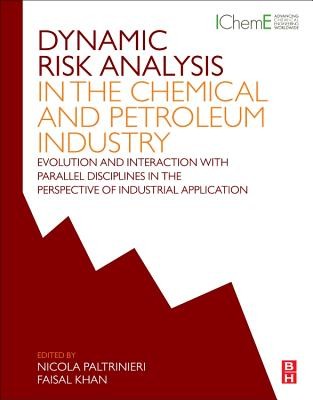
- We will send in 10–14 business days.
- Publisher: Butterworth-Heinemann
- Year: 2016
- Pages: 284
- ISBN-10: 0128037652
- ISBN-13: 9780128037652
- Format: 18.8 x 23.4 x 1.5 cm, softcover
- Language: English
- SAVE -10% with code: EXTRA
Dynamic Risk Analysis in the Chemical and Petroleum Industry (e-book) (used book) | bookbook.eu
Reviews
Description
Dynamic Risk Analysis in the Chemical and Petroleum Industry focuses on bridging the gap between research and industry by responding to the following questions:
- What are the most relevant developments of risk analysis?
- How can these studies help industry in the prevention of major accidents?
Paltrinieri and Khan provide support for professionals who plan to improve risk analysis by introducing innovative techniques and exploiting the potential of data share and process technologies. This concrete reference within an ever-growing variety of innovations will be most helpful to process safety managers, HSE managers, safety engineers and safety engineering students.
This book is divided into four parts. The Introduction provides an overview of the state-of-the-art risk analysis methods and the most up-to-date popular definitions of accident scenarios. The second section on Dynamic Risk Analysis shows the dynamic evolution of risk analysis and covers Hazard Identification, Frequency Analysis, Consequence Analysis and Establishing the Risk Picture. The third section on Interaction with Parallel Disciplines illustrates the interaction between risk analysis and other disciplines from parallel fields, such as the nuclear, the economic and the financial sectors. The final section on Dynamic Risk Management addresses risk management, which may dynamically learn from itself and improve in a spiral process leading to a resilient system.
EXTRA 10 % discount with code: EXTRA
The promotion ends in 19d.06:12:13
The discount code is valid when purchasing from 10 €. Discounts do not stack.
- Publisher: Butterworth-Heinemann
- Year: 2016
- Pages: 284
- ISBN-10: 0128037652
- ISBN-13: 9780128037652
- Format: 18.8 x 23.4 x 1.5 cm, softcover
- Language: English English
Dynamic Risk Analysis in the Chemical and Petroleum Industry focuses on bridging the gap between research and industry by responding to the following questions:
- What are the most relevant developments of risk analysis?
- How can these studies help industry in the prevention of major accidents?
Paltrinieri and Khan provide support for professionals who plan to improve risk analysis by introducing innovative techniques and exploiting the potential of data share and process technologies. This concrete reference within an ever-growing variety of innovations will be most helpful to process safety managers, HSE managers, safety engineers and safety engineering students.
This book is divided into four parts. The Introduction provides an overview of the state-of-the-art risk analysis methods and the most up-to-date popular definitions of accident scenarios. The second section on Dynamic Risk Analysis shows the dynamic evolution of risk analysis and covers Hazard Identification, Frequency Analysis, Consequence Analysis and Establishing the Risk Picture. The third section on Interaction with Parallel Disciplines illustrates the interaction between risk analysis and other disciplines from parallel fields, such as the nuclear, the economic and the financial sectors. The final section on Dynamic Risk Management addresses risk management, which may dynamically learn from itself and improve in a spiral process leading to a resilient system.


Reviews